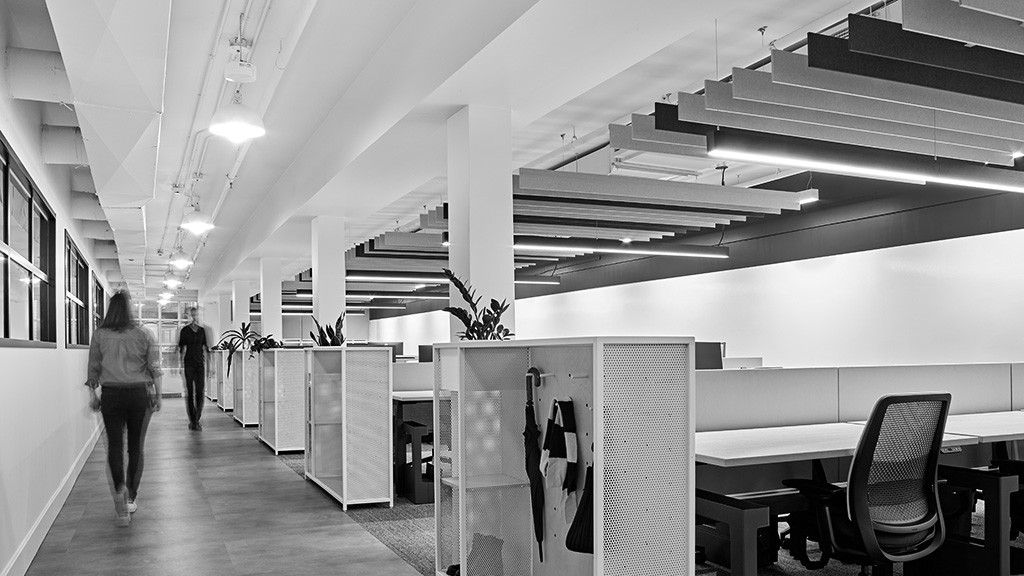The modern office is undergoing a quiet revolution. Amid the buzz of open-concept productivity and the click-clack of keyboards, there’s a growing awareness of the need for acoustic design. This isn’t just about muffling noise; it’s about fostering environments that promote well-being and concentration. With recent innovations in office acoustics, the soundscape of the workplace is transforming into a harmonious blend of design and technology.
Tuning into Trends: The New Wave of Office Acoustics
The contemporary office is a hub of collaboration and innovation. However, this comes with the challenge of managing noise levels, which can hinder focus and productivity. The latest trends in acoustic design offer solutions that are as innovative as they are necessary.
Companies are now integrating acoustic zoning, creating different areas for various levels of activity and noise. Quiet zones, collaborative spaces, and social areas are defined not just by visual cues but by their sound profiles as well. This strategic zoning helps maintain an energetic yet focused atmosphere where employees can move to the space that best suits their current task.
Smart offices are also adopting responsive acoustic systems, where sensors and AI work together to adapt the acoustic environment in real-time, based on the noise levels and the nature of the work being done. This can include automatically adjusting sound masking systems or modifying the ambient lighting and color, which research shows can impact perceived noise levels.
The Sounds of Productivity: How Noise Affects Work
The connection between noise levels and employee productivity is more than anecdotal; it’s a well-documented phenomenon. Studies have consistently shown that excessive noise in the workplace can lead to decreased concentration, increased stress, and lower job satisfaction.
Moreover, noise is not just a distraction; it can also be a health hazard. Long-term exposure to high noise levels can lead to a host of issues, including hearing impairment, increased blood pressure, and heart disease. As such, creating a well-balanced acoustic environment is essential not only for productivity but also for the overall health and well-being of employees.
The Materials Making a Difference
Innovations in materials and technologies are driving the office acoustic revolution. Sound masking, for example, is a technology that adds a low level of ambient sound to an environment, helping to cover up more disruptive noises. This sound is often a soft white noise or nature-inspired sounds, like flowing water or rustling leaves, and can significantly reduce the distraction radius of sudden noises like phone calls or spontaneous discussions.
Eco-friendly materials are also on the rise, with recycled fabric panels and plant-based foams becoming commonplace. These sustainable options not only absorb sound but also contribute to a greener office environment. Additionally, the incorporation of living walls—vertical gardens that can absorb sound as well as purify the air—melds acoustic functionality with biophilic design, creating spaces that are both acoustically and aesthetically pleasing.
Echoes of Innovation: Case Studies in Silence
The proof of any innovation lies in its implementation. One such success story comes from a tech giant’s headquarters in Silicon Valley. By integrating a sound masking system, the company reported a 50% drop in conversational distractions. Employees experienced a newfound sense of privacy and focus, and the company noted an uptick in both productivity and employee satisfaction.
Another case study involves a New York-based marketing firm that installed recycled fabric panels throughout its office. These panels not only served their primary function of sound absorption but also acted as vibrant visual elements, reflecting the firm’s creative ethos. Post-installation, the firm saw a reduction in the ambient noise level by approximately 20 decibels, creating a quieter, more focused environment for its team.
Listening Forward: The Acoustic Office of Tomorrow
As we look to the future, the trajectory of office acoustics points towards an even more integrated approach. Material science is progressing towards developing not only more sustainable acoustic materials but also ones that are self-adaptive, changing their properties in response to the acoustic needs of the moment.
In addition, the role of data in acoustic design is becoming more pronounced. By harnessing the power of big data and predictive analytics, offices of the future may be able to anticipate and manage their acoustic environments, creating optimal conditions for their workforce.
The quiet revolution in office acoustics is not just about sound; it’s about creating environments that respect the health, well-being, and productivity of employees. As we embrace these innovations, we make way for office spaces that not only sound better but also support the best work of our lives. The future of office design promises to be one where every decibel counts, and where silence is golden.

